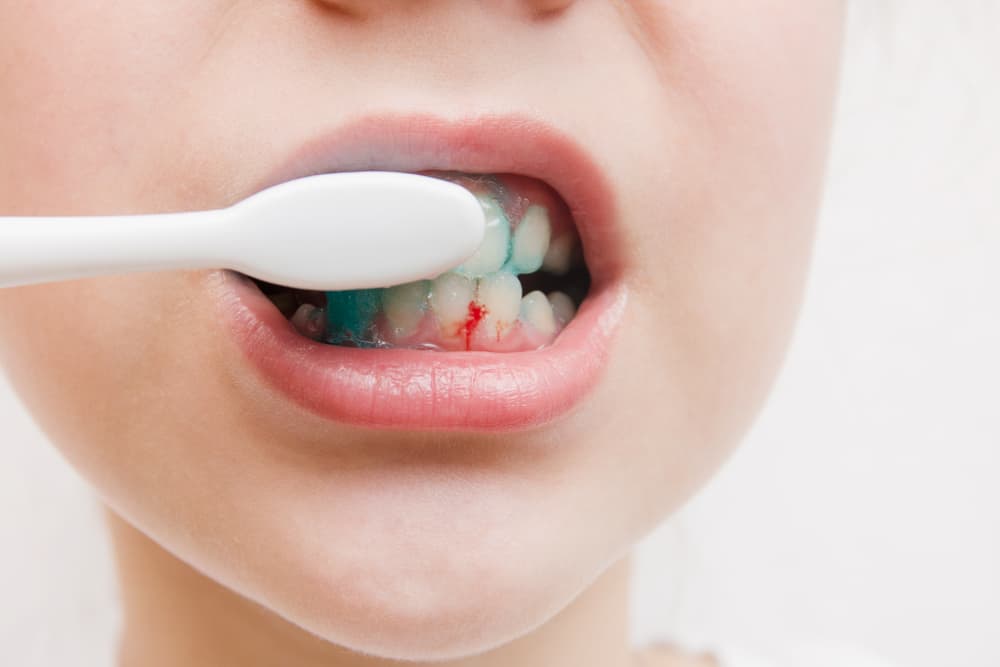Do you have sore, swollen or bleeding gums while flossing?
When we think about dental health, our minds usually go straight to teeth, cavities, whiteness vs. yellowness, and sometimes finally gum health. Gums however, are usually the first indicator of oral health and can have an impact on your overall well-being.
If you notice that your gums begin to bleed while brushing or flossing your teeth, then that’s a sign of gum disease and possibly other gum problems. If you notice your gums are bleeding early on before the damage worsens, then you can prevent periodontitis and gum recession.
How to Brush Your Teeth
In order to properly brush your teeth, it’s important to avoid a lot of common mistakes. Whether you brush using a manual or electric toothbrush, choose one with soft bristles that have blunt ends to avoid damaging the enamel on your teeth or most commonly: red and swollen gums.
The second most common problem with the way people brush and floss their teeth is that they’re too rough. Just because you brush harder, doesn’t mean they’ll be more clean. Instead, use gentle, circular motions to clean your teeth and gums.

This brings us to the the most common and third biggest issue we see with how people brush their teeth: brushing for two full minutes. Two minutes feels like a long time, but can feel more manageable with a timer. We highly recommend using a 2 minute timer either on your phone or with a sand glass to be sure you brush for the proper amount of time.
Finally, the toothbrush bristles should be angled at a 45-degree angle towards the gums for maximum effectiveness in preventing plaque and tartar buildup between the gums.
On another note, there’s been a rise in people recommending brushing with toothpastes that don’t contain fluoride. Avoid the problems and issues that will come with following the hype and use a toothpaste that contains fluoride.
Just recap and summarize the best way to brush: Proper brushing of the teeth includes brushing with a toothpaste that contains fluoride, with soft bristles at the right angle, intensity, and full duration of two minutes.
How to Properly Floss Your Teeth
While brushing is important, there’s nothing better than flossing to get at those hard to reach places where bacteria and plaque build up the fastest. To prevent swollen and bleeding gums when you floss, be religious about how often you floss. Make it every day at least once a day, especially at night time.
The key to flossing properly is that instead of flossing up and down between your teeth, follow the curve of each tooth to the gum and make sure to hit the spots where they connect. That’s where the majority of bacteria and plaque grow. By preventing that growth, you can prevent tartar buildup, gum disease, and those pesky red and swollen gums that are so irritating.
Need Help With Your Brushing and Flossing Technique?
Visit Pickett Family Dental for a dental cleaning and exam with one of our amazing hygienists and we’ll also teach you how to properly brush and floss your teeth at the end of your visit. If you have any questions, schedule a consultation or dental cleaning and exam by calling our Keller, TX office at (817) 431-5514.



